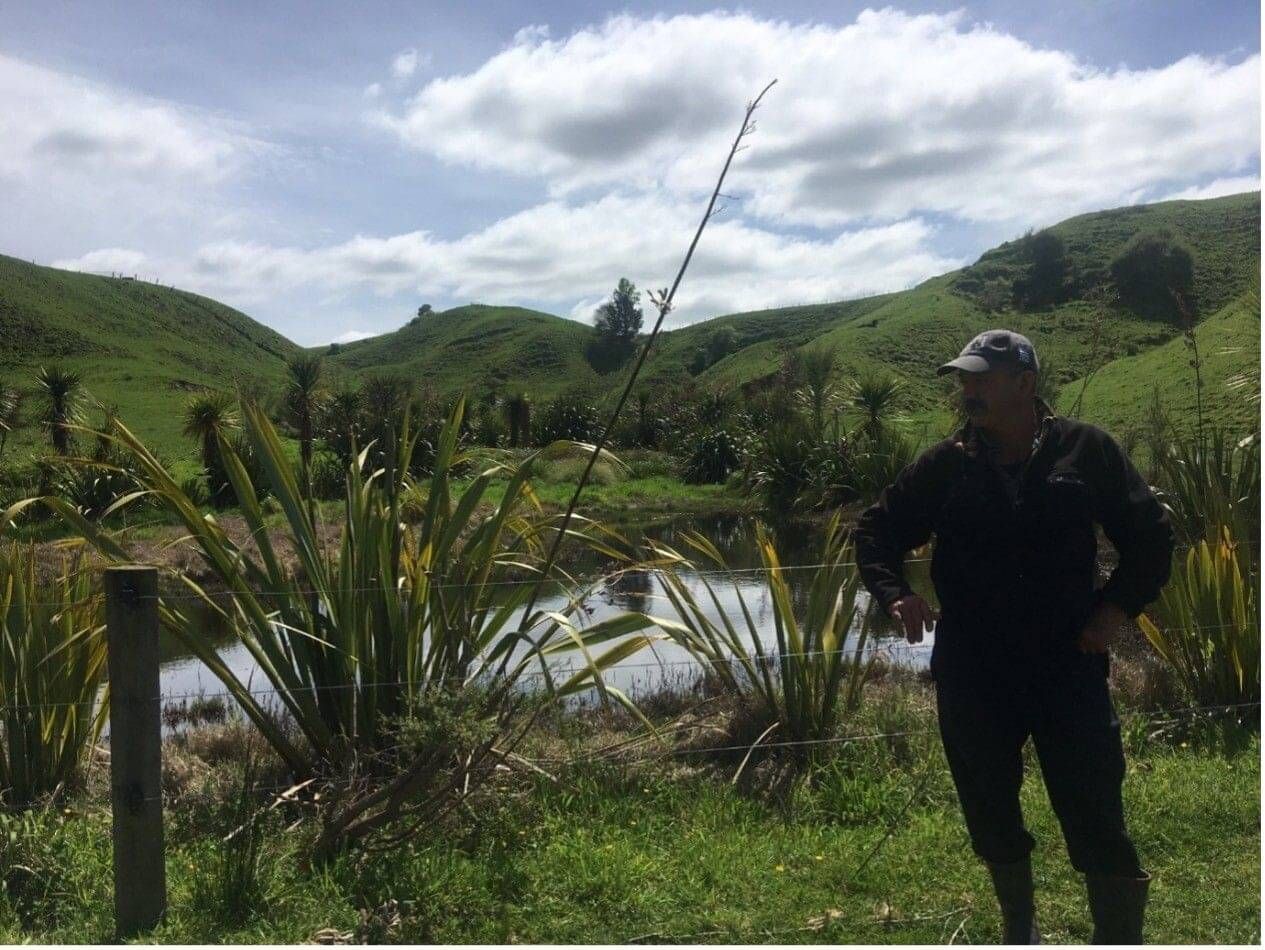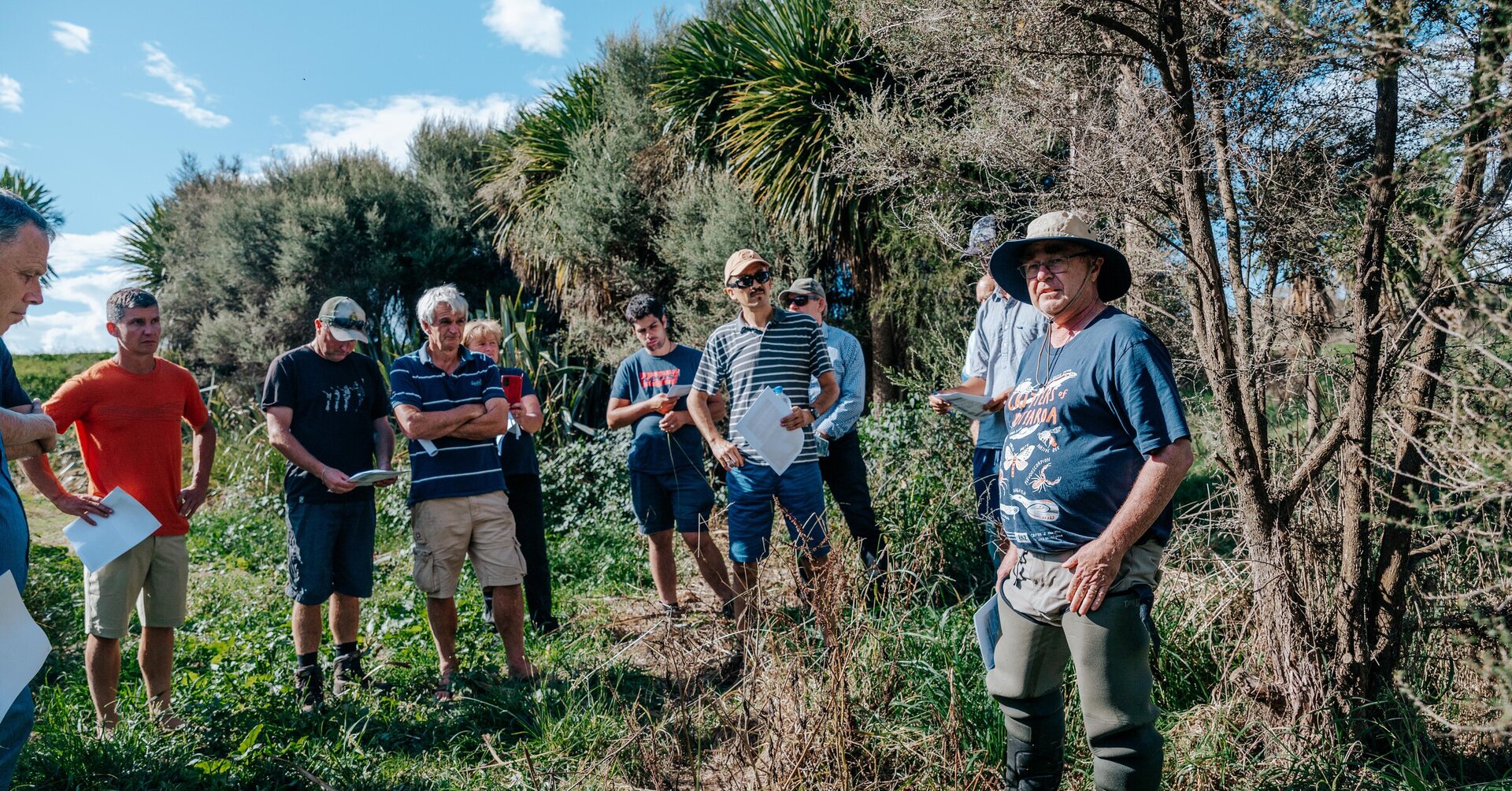Catch a Good Feeling – Build a Wetland….
Contributor: Alison Dewes, Wai Kōkopu Project Manager
The wet season has shown all of us the super boggy places on our farms.
What a great year to work out where all the flow paths go.
Many of these flow paths are called ephemeral streams – that is where the water flows across the land in rapid rainfall events and when the soil is saturated. Where the water collects, is likely to be an old wetland.
These make up a huge network of arteries that feed the more substantial drains & streams.
It is the collection points of water from these smaller flow paths (before reaching the waterway) are that are very important to manage.
More than three-quarters of the nutrient load in waterways comes from those exempted from fencing requirements, AgResearch has found.
Under water quality standards streams not wider than a stride are not required to be fenced. But “wider than a stride and deeper than a Redband” might not prove a sufficient standard if the pastoral sector was to continue to achieve water quality gains.
When you look at your farm, many of these are places that stock shouldn’t be anyway: they are boggy, wet, oozing water on a regular basis and in a former life were invariably a wetland.
When they are at the bottom of a gully or on a seepy hillside, it makes sense to retire them.
Where stocking rates are heavy in these areas, they result in critical source areas (CSAs). When stock interact with seeps and wetlands, we get hotspots of nutrient – pathogen and sediment runoff. If these small collection points are retired into a wetland they will significantly reduce pollution and act as a kidney for runoff before it reaches a waterway.
Creation of a wetland is like building a kidney for your water runoff filtration system.
These areas will not be making any significant contribution to the farm economic surplus and in fact may be costing you through disease and stock losses. Retiring these areas can work well, there can be stock misadventure, and when cattle drink from them it may be doing more harm than good.
Boggy areas can cause cows to defecate more as they can’t see where they are putting their feet. This means they can be a source of disease transfer – from cow to cow via faecal oral pathway (faeces get into contact with ingested water).
Diseases like Johnes, Salmonella and Yersinia are typical bugs easily transferred this way, and these places can be a habitat for liver fluke.
Some farms have now managed these areas as part of a Johnes control programme, as it is clear that avoiding the pathway between animal faeces and water sources is an important mitigation.
Other farms that have gradually retired or excluded these areas have noted better animal health especially where cows depend on reticulated water supply for year -round minerals and animal health treatments.
There are plenty of win- wins. You can beautify your farm over time, most regional councils will fund this.
The great thing is that you will enjoy doing it and your farm will be thankful for it.
My experience around New Zealand indicates this can be in a range from 25% to 75% of the total cost to retire and plant these areas. This is why farmers need financial assistance to plant.
Cost is a factor of plant density. At $2/plant 1*1 spacings = $20,000/ha whereas 3*3 spacings = $2300/ha. Use Manuka as primary cover on sidlings. If serious weeds are not a factor [if this land is in pasture] then plant at lower density and allow time to establish the wetland.
At the very worst simply fencing off the CSA will leave significant benefits. Mature trees can be planted amongst the manuka once it is established. This reduces losses. This approach can halve the price if it is done well.
So, a win- win is established, for animal health, for farm asset values, and for ecological health.
Most farms will have several CSAs. Once you have done one you will want to carry on – it is infectious in a good way.

- Get a Land and Environment Plan done, or ask the Regional Council Land Advisors to help you. Some milk companies are offering this service.
- Understand the costs early, and be clear on how much funding you are eligible for with your local council.
- To get funding you will need stock-proof fencing and maintain it, there will need to be site preparation, spraying, weed and pest control and planting, then freeing up of plants as they establish.
- Plants need to be ordered around 10-12 months ahead of start date, so this is a staged and planned process.
- The planting rate per hectare can range from 1100-2500 plants – this drives the cost.
- It is likely when you designate to retire these seeps or wetlands, you won’t need to adjust stock rate at all as they will generally be costing you through animal health misadventure and disease spread.



